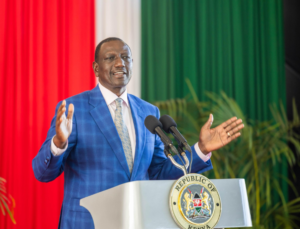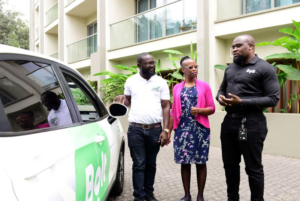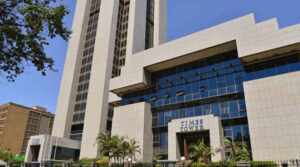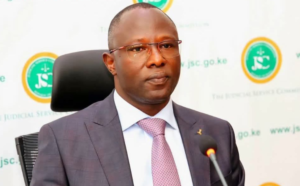Schneider Electric Launches EcoStruxure For Energy In EA, Software To Monitor Off-grid Energy Consumption

[Photo/Schneider Electric]
Schneider Electric the global specialist in the digital transformation of energy management and automation, today unveiled the latest version of its award-winning software EcoStruxure in East Africa, During the Global Offgrid expo 2020 at Safaripark Hotel Nairobi.
Schneider Electric helps communities maximize efficiency and profitability thanks to the recently unveiled EcoStruxure for Energy Access, a comprehensive metering, analytics and reporting solution for microgrid projects.
The system offers customers an affordable, flexible and open architecture, and platform that improves profitability and efficiency of off-grid installations with data-driven analysis.
Read: Schneider Electric Launches New Stand-alone Pay-As-You-Go Electricity Solution
“The unveiled EcoStruxure for Energy Access is the latest addition to the offerings from Schneider Electric’s Access to Energy program. It will scale-up sustainable off-grid electrification thanks to its simple, flexible and open architecture and easy to access analytics and reporting,” says Olivier Jacquet, Vice President Access to Energy, Middle East and Africa at Schneider Electric.
Schneider Electric has already installed 350+ picogrids (<4kWp) and 600+ microgrids in off-grid areas worldwide, equivalent to 23,5+ MWp over the past four years.
Building on Schneider Electric’s Villaya range of affordable solar products including lanterns, street lights, water pumps, home systems, containerized mobile solar emergency and community microgrid solutions, EcoStruxure for Energy Access brings on board the EcoStruxure Energy Access Advisor and EcoStruxure Energy Access Expert to monitor site performance, and report end user load balance and energy credit in real time, while giving trend data to improve operational efficiency.
Read: Schneider Electric Unveils Digital Architecture For Energy Management In Buildings
The system also allows scalability and evolution of pico-grids, upselling of relevant offers, and customization of business models as the amount of available energy grows.
“At Schneider Electric, our role is to make sure that ‘Life is On’ for everyone, everywhere, at every moment. As such, sustainability is at the heart of our company strategy,” says Edouard Heripret, General Manager, East Africa at Schneider Electric.
Between 2009 and 2019, Schneider Electric has provided energy access solutions to more than 25 million people, invested in 20 companies, trained more than 250,000 people and supported more than 700 entrepreneurs. It aims to have 80 million people with electricity by 2030, 1 million people trained, and 10,000 entrepreneurs supported by 2025.
Read: Schneider Electric Accelerates Transition To Low Carbon Economy In One Planet Summit In Nairobi
According to IEA 2017 World Energy Access Outlook, microgrids are the most cost-effective way to expand energy access in remote areas. The IEA also predicts that by 2030, between 30 and 40 percent of people in developing countries will be powered by microgrids, fueled by renewable energy sources such as solar.
However, the available energy – at least initially – only allows access to basic services such as mobile phone charging and LED lighting, while end-users often earn less than $1.50 (Ksh150) a day.
Precise load management and metering, as well as real-time monitoring and analytics, are needed to maximize the efficiency of these projects, and to guarantee that they can thrive and grow.
Read: Schneider Electric Launches Go Green In The City 2019
EcoStruxure at the heart of Uganda microgrid project EcoStruxure for Energy Access has already been demonstrated on a Villaya microgrid project in partnership with global organization Mercy Corps at their field office in Kaabong, North East Uganda.
Kaabong is a semi-arid region where many households are without electricity, relying mainly on kerosene lamps for lighting.
The Villaya microgrid was designed and built to withstand harsh environments for many years, and was installed in Kaabong. Together with a remote monitoring solution, the system will be able to provide both real time and historical data for analysis and troubleshooting.
Read: Schneider Electric Launches EcoStruxure IT, An Architectural Data Management Center
The microgrid is now providing reliable, clean and safe energy to Mercy Corps’ office, with a cost saving of $2,000 (Ksh200,000) per month.
Importantly, the project has resulted in zero CO2 emissions at Kaabong since installation, which is a monthly CO2 saving of 1,150 tonnes compared with genset use emissions.
“The Ecostruxure for Energy Access platform gives both Mercy Corps and Schneider Electric a clear view of real-time and historical microgrid performance, energy consumption and reporting analytics, allowing pro-active financial and operations planning to be carried out leading to a high degree of autonomy and overall peace of mind,” says Schneider Electric.
For all the latest technology and business news from Kenya and the world, follow us on Twitter and like us on Facebook.






